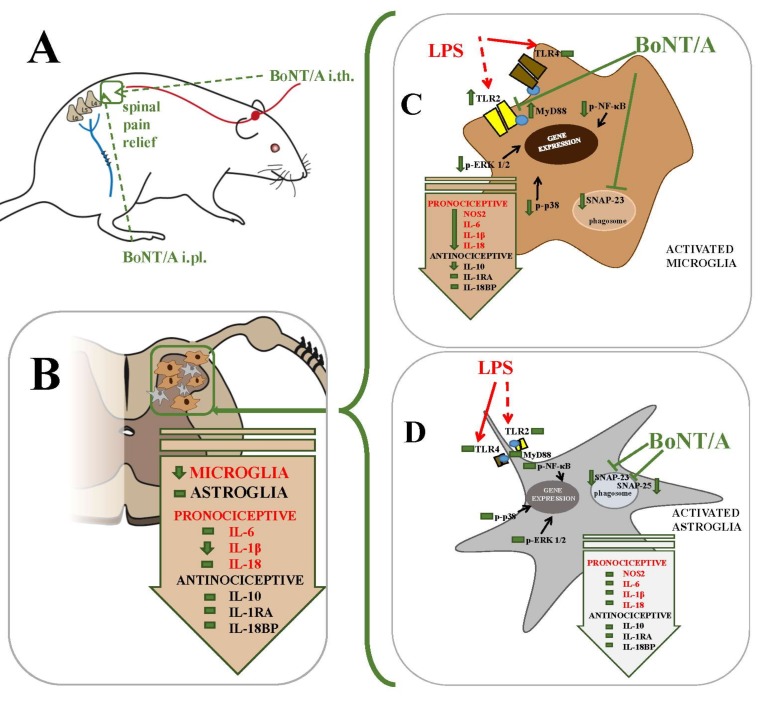Figure 1.
Suggested mechanism of botulinum toxin type A action under neuropathic pain conditions. (A) Intrathecal (i.th.) as well as intraplantar (i.pl.) injections of BoNT/A relief pain in animal models of neuropathy. Recent evidence suggests the possible retrograde transport and transcytosis of BoNT/A, which might be at least partially responsible for its analgesic effect. (B) Peripheral administration of BoNT/A reduced spinal microglial, but not astroglial, activation after sciatic nerve injury. (C,D) The data obtained from in vitro studies revealed that BoNT/A can directly influence microglial cells and it is achieved through the modulation of TLR2 receptor, SNARE proteins and intracellular pathways in microglial cells. BoNT/A diminishes LPS-induced phosphorylation of p38, ERK1/2, and NF-κB and reduces the release of pro-inflammatory factors, such as IL-1β, IL-18, IL-6, and anti-inflammatory IL-10 in microglia. No effects of BoNT/A on astroglia were observed. Mechanism of BoNT/A in glial cells is related to activation of TLRs, type 2 and 4. Complete activation of TLR2 in astroglia requires the presence of the microglial TLR4 receptor. Glial cross-talk may explain the lack of effect of BoNT/A on astroglia and it was suggested that the molecular target of BoNT/A is TLR2. See detailed description in the text Abbreviations: SNAP, synaptosomal-associated protein; TLR, Toll-like receptor; MyD, myeloid differentiation primary response gene; ERK1/2, extracellular-signal-regulated kinase 1/2; NF-κB, nuclear factor-κB; NOS2, inducible nitric oxide synthase; IL, interleukin; LPS, lipopolysaccharide, BoNT/A, botulinum toxin serotype A.

